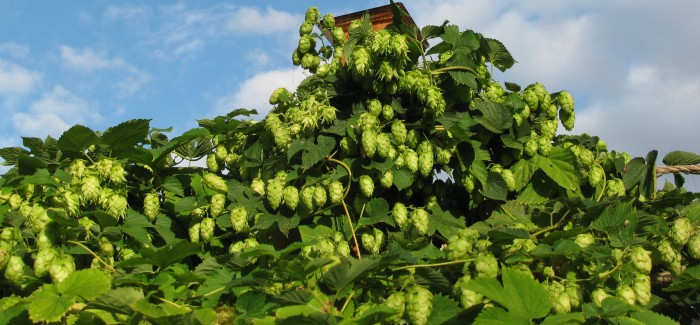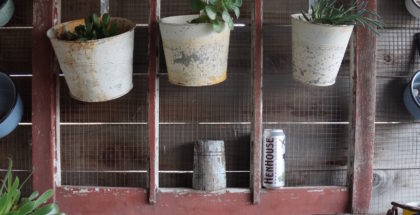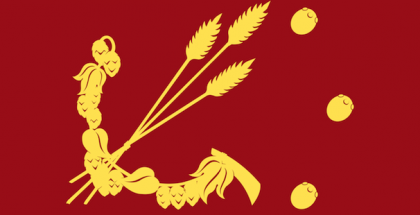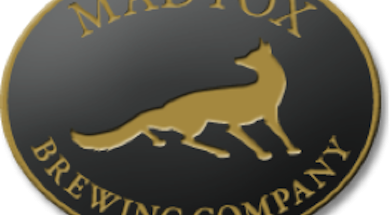Homebrewing: Make a Hop Statement
Trying to keep up with the ever-popular double, triple and imperial IPAs is no easy task. It seems like every time you turn around some brewery is adding a new face-melting IPA to their line-up or collecting accolades for an exceptional year-rounder. So how do these breweries impart those incredible hop flavors and aromas in their beer and what can I do to make a better homebrewed IPA? In this weeks’ homebrew column, Homebrewing: Make a Hop Statement I’m going to share some of my favorite hopping techniques and the reasons behind using them.
First Wort Hopping: First wort hopping requires the addition of hops to the kettle at the beginning of the lauter. Hops steep in your pre-boil wort for the duration of your lauter and then remain in the kettle for the entirety of the boil. For extract or BIAB brewers first wort hops should be added when the specialty grains, or grain bag is removed from the kettle and you begin to heat the wort towards a boil. The benefit of first wort hopping is that when the hops are allowed to steep prior to the boil, their volatile flavor components are bound to the malt components in the boil. Once bound to these malt components it helps to prevent the boil off of the flavor and aroma oils that occur with standard 60 minute hop additions. The extra contact time for the hops with the wort theoretically should increase the IBUs of the hop addition by about 10% over a typical bitterring charge added at the time of the hot break, but my personal experience is that the perceived bitterness is about 10% less. I enjoy first wort hopping because of the lessened perceived bitterness, the additional flavor and aroma characteristics and a smoother, less harsh bitterness. I like to use high alpha acid varieties with nice flavor and aroma characteristics as first wort hops. Try Centennial, Chinook, Amarillo, Citra or Simcoe.
Late Hopping: Traditionally flavor and aroma hop additions are all added within the last 30 minutes of the boil. If your budget can afford to shift more hop additions to later in the boil, your aroma and flavor will improve tremendously. For your next hop-forward beer, try adding all the hops in the last 30 minutes of the boil and up the additions to keep your same desired IBU levels. Since extraction of alpha acids from the hops is a logarithmic scale, don’t think that you need to double the hop addition because you reduced the time the hops are boiled by half. 2oz of hops at 30 minutes remaining in the boil will contribute more IBUs than 1oz of the same hop added at 60 minutes remaining in the boil.
Whirlpool Hopping: The technique requires the addition of hops at flameout from the kettle while the wort is being whirlpooled to separate the trub and proteins from the wort that will be transferred to the fermenter. Hop alpha acids are isomerized anytime the wort temperature is above 185F, so you can still achieve significant IBUs even though the boil is complete. Be careful here that many homebrewing software does not take into account the bitterness added from whirlpool hopping. Again, this strategy imparts HUGE aroma and flavor characteristics, so pick your hops wisely. Again, I prefer to save my favorite aroma and flavor hops for this addition and add them here before any other time in the boil if I have limited quantity. Try newer New Zealand hop varieties like Mosaic and Nelson Sauvin here in addition to other popular flavor and aroma hops like Cascade, Centennial, Citra, Amarillo and Simcoe.
Another technique that I am interested in trying but have not had the opportunity to, nor the the desire to add another piece of equipment to my brew set-up, is hop back hopping. Hop back hops essentially are added post whirlpool in a separate vessel that is inline between the boil kettle and plate heat exchanger. The benefit here is that the hop isomerization takes place immediately before cooling to pitching temperatures without exposure to air, essentially ‘locking’ them in.
Lets take a look at a few commercial examples of my favorite IPAs to understand not only the total hop usage, but times and percentages used at different times throughout the boil.
Russian River Pliney the Elder: 90 minute boil. 40% of the IBUs come from a CTZ bittering charge at 90 minutes, 9% of the IBUs from Simcoe at 45 minutes remaining and 11% of the IBUs from Centennial with 30 minutes remaining. 40% of the IBUs comes at flameout with an equal contribution from Cascade, Simcoe, Amarillo, and Centennial! This beer is dry hopped at a rate of 0.5oz per gallon or about 1lb/barrel. Peep this free download written by Vinnie Cilurzo on brewing DIPA, with his Pliney recipe included.
Stone Ruination IPA: 90 minute boil. 62% of IBUs come from Columbus at the start of the boil and 38% IBUs come from Centennial during the whirlpool.
Firestone Walker Union Jack IPA: 90 minute boil. Calculate 50 IBUs at 5%AA using Magnum, Warrior or CTZ at the start of the boil. At 30 minutes remaining, add 14 IBUs of 6%AA Cascade and add the same quantity of Centennial at 15 minutes remaining. Add 50/50 blend of Cascade and Centennial at whirlpool equaling 0.41oz/gallon or 0.8lb/barrel.
All of these recipes have significant hop contributions late in the boil. Try increasing your whirlpool hop additions of improved hop flavor and aroma in your next homebrew!








Submit a Comment